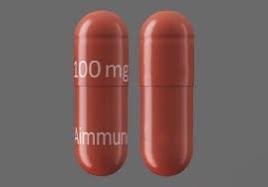Palforzia Interactions
There are 139 drugs known to interact with Palforzia (peanut allergen powder), along with 3 disease interactions, and 1 alcohol/food interaction. Of the total drug interactions, 65 are major, and 74 are moderate.
- View Palforzia alcohol/food interactions (1)
- View Palforzia disease interactions (3)
Medications known to interact with Palforzia
Note: Showing generic names only.
A
- acebutolol
- acetazolamide
- acrivastine
- alfuzosin
- amitriptyline
- amoxapine
- astemizole
- atenolol
- azatadine
B
- benazepril
- bendroflumethiazide
- benzthiazide
- betaxolol
- bisoprolol
- bromfenac
- brompheniramine
- bumetanide
C
- captopril
- carbinoxamine
- carteolol
- carvedilol
- cetirizine
- chlorcyclizine
- chlorothiazide
- chlorpheniramine
- chlorthalidone
- clemastine
- clomipramine
- cyproheptadine
D
- desipramine
- desloratadine
- dexbrompheniramine
- dexchlorpheniramine
- dichlorphenamide
- diclofenac
- diflunisal
- digitoxin
- digoxin
- dihydroergotamine
- diphenhydramine
- doxazosin
- doxepin
E
- enalapril
- enalaprilat
- entacapone
- ergoloid mesylates
- ergonovine
- ergotamine
- esmolol
- ethacrynic acid
- ethanol
- etodolac
F
H
I
K
L
- labetalol
- landiolol
- levocetirizine
- levothyroxine
- levothyroxine / liothyronine
- linezolid
- liothyronine
- liotrix
- lisinopril
- loratadine
M
- mannitol
- meclofenamate
- mefenamic acid
- meloxicam
- methazolamide
- methdilazine
- methyclothiazide
- methylene blue
- methylergonovine
- methysergide maleate
- metolazone
- metoprolol
- metyrosine
- moexipril
N
O
P
- penbutolol
- perindopril
- phenelzine
- phenindamine
- phenoxybenzamine
- phentolamine
- phenylbutazone
- pindolol
- piroxicam
- polythiazide
- prazosin
- procarbazine
- promethazine
- propranolol
- protriptyline
- pyrilamine
Q
R
S
T
- tamsulosin
- terazosin
- terfenadine
- thyroid desiccated
- thyrotropin alpha
- timolol
- tolazoline
- tolcapone
- tolmetin
- torsemide
- trandolapril
- tranylcypromine
- trichlormethiazide
- trimeprazine
- trimipramine
- tripelennamine
- triprolidine
Palforzia alcohol/food interactions
There is 1 alcohol/food interaction with Palforzia (peanut allergen powder).
Palforzia disease interactions
There are 3 disease interactions with Palforzia (peanut allergen powder) which include:
More about Palforzia (peanut allergen powder)
- Palforzia consumer information
- Compare alternatives
- Drug images
- Side effects
- Dosage information
- During pregnancy
- FDA approval history
- Drug class: allergenics
- En español
Related treatment guides
Drug Interaction Classification
| Highly clinically significant. Avoid combinations; the risk of the interaction outweighs the benefit. | |
| Moderately clinically significant. Usually avoid combinations; use it only under special circumstances. | |
| Minimally clinically significant. Minimize risk; assess risk and consider an alternative drug, take steps to circumvent the interaction risk and/or institute a monitoring plan. | |
| No interaction information available. |
See also:
Further information
Always consult your healthcare provider to ensure the information displayed on this page applies to your personal circumstances.


